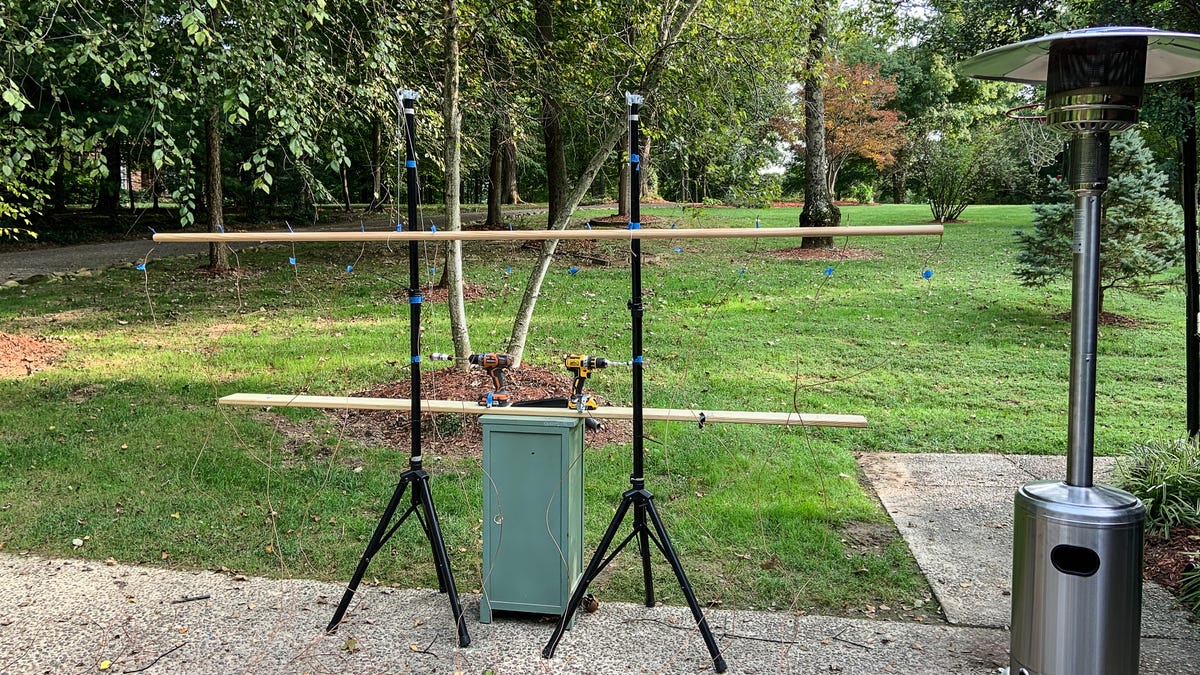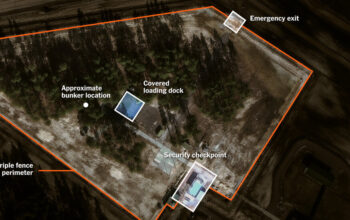All of the heaters arrived packed in boxes and required assembly. The level of difficulty was roughly on par with assembling Ikea furniture: there were manuals that occasionally needed a little interpretation.
Of the traditional-style pole heaters, there was so little variation between the products — from assembly to operation to looks — that they might as well have all come from the same factory. Nevertheless, I followed each set of instructions as they were written to ensure testing accuracy. By the time I got to the last of the pole heaters, I was a pro and it was a breeze. Nothing about the assembly process really stood out, except for the fact that it highlighted the similarities between all of the traditional models. I was, however, pretty happy to see that Amazon sent not one, but two cheap wrenches to aid my efforts. The excitement was short-lived, though, because the pyramid-style heaters were a little trickier to put together.

Cordless drill-powered testing rig. It’s important to be able to raise the thermocouples quickly during the testing process
None of the heaters I tested are going to sweat you out at long distances, but getting up next to one will certainly warm you up. Some manufacturers claim the heater will warm up to eight feet away from the heater, and the results prove that to be true — sort of. All but one heater showed an increased temperature at eight feet away. But keep your coat on, because at that distance we’re talking about only half a degree warmer than the ambient temperature. The warm glow on your face will be nice, but you’re going to need to move closer to the heater’s flame to keep warm on the coldest days. I took temperature measurements at four set elevations relative to the heater’s cap, and 11 equal distances from the heater for a total of 44 points of measurement. Because a patio heater isn’t necessarily made to warm at a distance, the useful range for most of them is about four feet.
I measured each unit by recording temperatures with a one-dimensional, horizontal array of 11 thermocouples that I moved to four different elevations. The thermocouples, starting one foot away from the burner, are each placed in one-foot intervals. For test equality, the elevation of the thermocouples are determined by the height of the unit being tested: 10, 20, 30 and 40 inches below the unit’s cap. I then compared the temperature at each location to the ambient temperature (also recorded by a thermocouple removed from the reach of the heater’s effect). I don’t have a temperature-controlled environment here at my home in southern Indiana, so I tested all of the heaters in one session, to minimize the difference of the ambient conditions on the test results. In order to get through the tests as quickly as possible I put together a drill-powered system to raise and lower the array of thermocouples to premeasured elevations.

